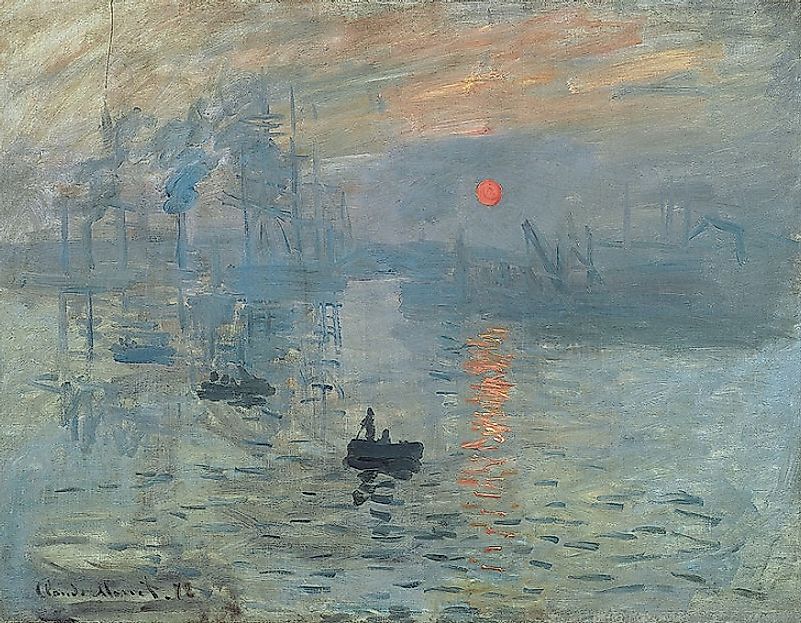French Impressionism Art

Art is a form of creative expression, and with the passage of time has become more commonly seen to explore previously unimaginable heights through different art movements and styles. The form of visual art known as Impressionism was developed in the 18th Century by a group of liberal artists from France who challenged the rules and principles of the conservative Academy of Arts on what to paint and how to paint. With a desire to capture real life events on canvas, the impressionists pursued the combined use of techniques, colors, and light with brush strokes that gave the impression of unfinished glimpse of life moments.
5. Overview of the Style -
Impressionism incorporates the use of bright and vibrant colors made with visible, short, and thick brush strokes, placing emphasis on the influence of light on the subjects of the paintings. Impressionism was developed to capture what a viewer would see at the first glimpse of an object. Impressionists did their paintings outdoors creating unique paintings that evoked the mood of viewers. The style was criticized for its lack of focus on details, therefore, producing sketch-like paintings compared to other artistic styles. The combination of a variety of techniques and the influence of the then growing photographic images led to the establishment of a new style, Impressionism.
4. History and Development -
The French Impressionism art movement was established in the 1860s by Claude Monet, Edgar Degas, Camille Pissarro, and others who rejected the restrictive and conservative rules of the Academy of Arts, as well as frustration over the high rates of rejection of their works by the national gallery exhibition, known as the Salon. The group mixed some existing techniques often the use of lighter colors to portray modern life unlike the conservative historical and still paintings endorsed in academic painting. The impressionists held a total of 8 exhibitions between 1874 and 1886 displaying some of their artworks and those of other willing artists.
3. Notable Artists and their Works -
Some of the most famous and outstanding works of the impressionists included In a Park by Berth Morisot, Fog, Violins by Alfred Sisley, L’Absinthe by Edgar Degas, Paris Street, Rainy Day by Gustave Caillebotte, Vetheuil in the Fog by Claude Monet, At the Opera by Mary Cassatt, Girl with a Hoop by Pierre-Auguste Renoir, The Boulevard Montmartre, Afternoon by Camille Pissarro, and Impression, Sunrise by Claude Monet. The latter was the influence on the name later given to the ‘Independents’ and their movement by art critic Louis Leroy.
2. Decline and Subsequent Movements -
The fall of the impressionists was mainly attributed to the constant internal wrangles within the members, especially regarding the exhibition of their works. This occurred as some artists still preferred to submit their works to the Salon, as doing so would mean gaining a good reputation as well as exposure to a wider audience. Low financial turnovers and attachment to the earlier technique led to the exit of young liberal artists who wanted to explore and create newer styles. The group had ended in the 1890s with some members forming new movements including post-impressionism and neo-impressionism.
1. Legacy -
Though the French impressionist movement declined towards the start of the 20th Century, their style was a significant influence on subsequent styles developed by newer generations of artists. Cubism, a creation of Pablo Picasso and Georges Braque, was significantly influenced by impressionism. Other famous styles that drew their influences from Impressionism include Abstract Expressionism, post-Impressionism, and Fauvism.







